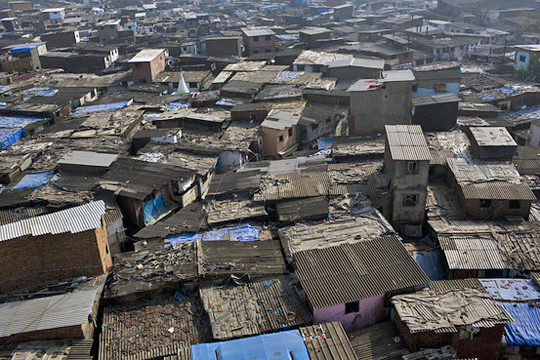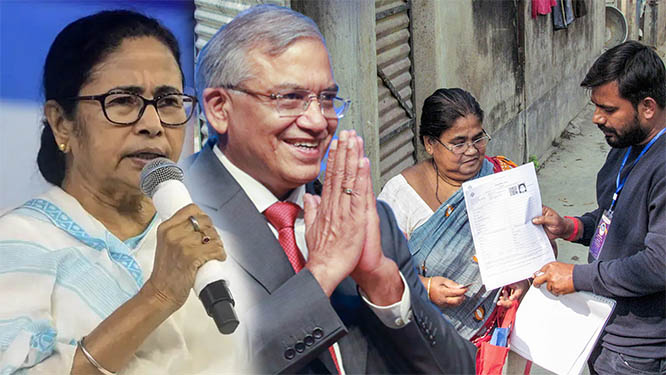Mumbai, Jan 16: Almost 30 years after late prime minister Rajiv Gandhi visited Dharavi, once ranked as Asia's biggest slum, his son and Congress vice president took out a padayatra (walk) in the same areas here on Saturday.

It was meant to pep-up the party organisation for next year's civic elections here on Saturday.
Accompanied by a host of senior Mumbai and Maharashtra Congress leaders and more than 40,000 activists besides a posse of security personnel, Gandhi put up an impressive show walking from Bandra Bandstand to Dharavi slum -- a distance of roughly five kilometres.
Party workers carrying Congress flags, placards and banners followed him enthusiastically, occasionally raising gusty slogans of 'Rahul Gandhi Zindabad', 'Congress Zindabad,' 'Rahul Gandhi age Chalo, Hum Tumhare Saath Hain', et al.
Unmindful of the harsh winter sun, a smiling Rahul Gandhi kept a brisk pace, but broke the tempo often to accept garlands, flowers, shake hands with the people, exchange a word or two with the slum-dwellers, putting his arms around some or patting some others.
The route was chosen carefully, giving Rahul Gandhi an opportunity to walk through the Muslim pockets and middle-class areas of Bandra west,coming down to Mahim Causeway where thousands of fisherfolk live in the Fishermen's Colony, then onto Dharavi slum which has a mixed bag of north Indians, south Indians, Dalits, Maharashtrians and Muslims.
Throughout the padayatra, Gandhi was flanked by Mumbai Congress President Sanjay Nirupam, AICC general secretary Gurudas Kamat, Kurla legislator Naseem Khan, several other former parliamentarians, legislators, former state and union ministers and party office-bearers on the walkathon.
During the walk, he interacted with autorickshaw drivers, labourers, small entrepreneurs, hawkers, small shopkeepers and businessmen and residents.
"I call upon Prime Minister Narendra Modi that before he talks about 'Make in India', he should come and see this place and implement 'Make in Dharavi' which generates businesses and services worth hundreds of crores of rupees daily," Gandhi said.
Spread across more than 550 acres of land, Dharavi, with a population estimates of around 1.30 million, has a thriving local economy and small household businesses with their products sold around the country and even exported globally.
Old timers and residents remembered a similar road show put up by the late Rajiv Gandhi from Dharavi to Asalfa Village in Ghatkopar, a distance of around 10 km.
Unlike the changed scenario in 2016, Dharavi three decades ago was a wretched slum pocket, shunned by most politicians and avoided even by Mumbaikars.
After his trip down Dharavi lanes, Rajiv Gandhi had announced a Rs.1 billion package, signaling the start of the improvement of that underbelly of Mumbai encompasses at least two Lok Sabha constituencies and over a dozen assembly segments of central Mumbai.








Comments
Add new comment